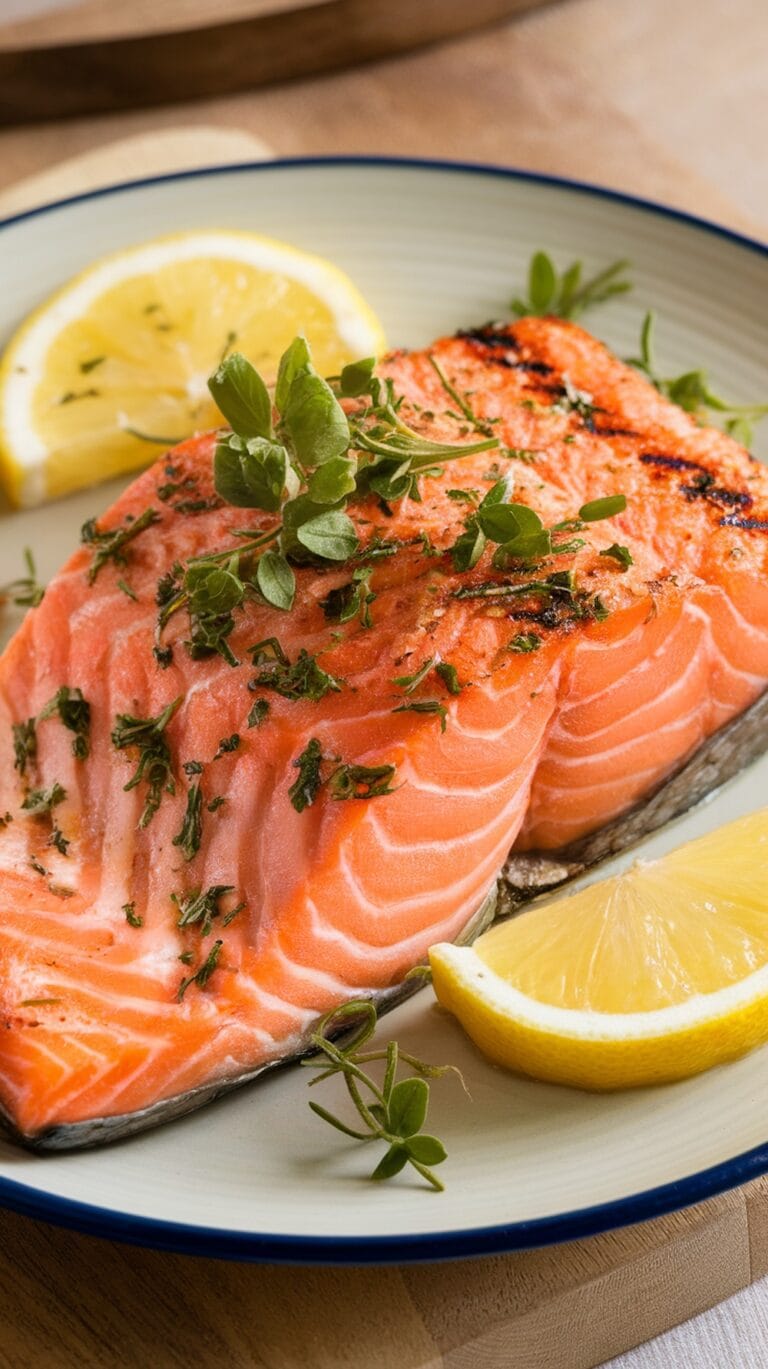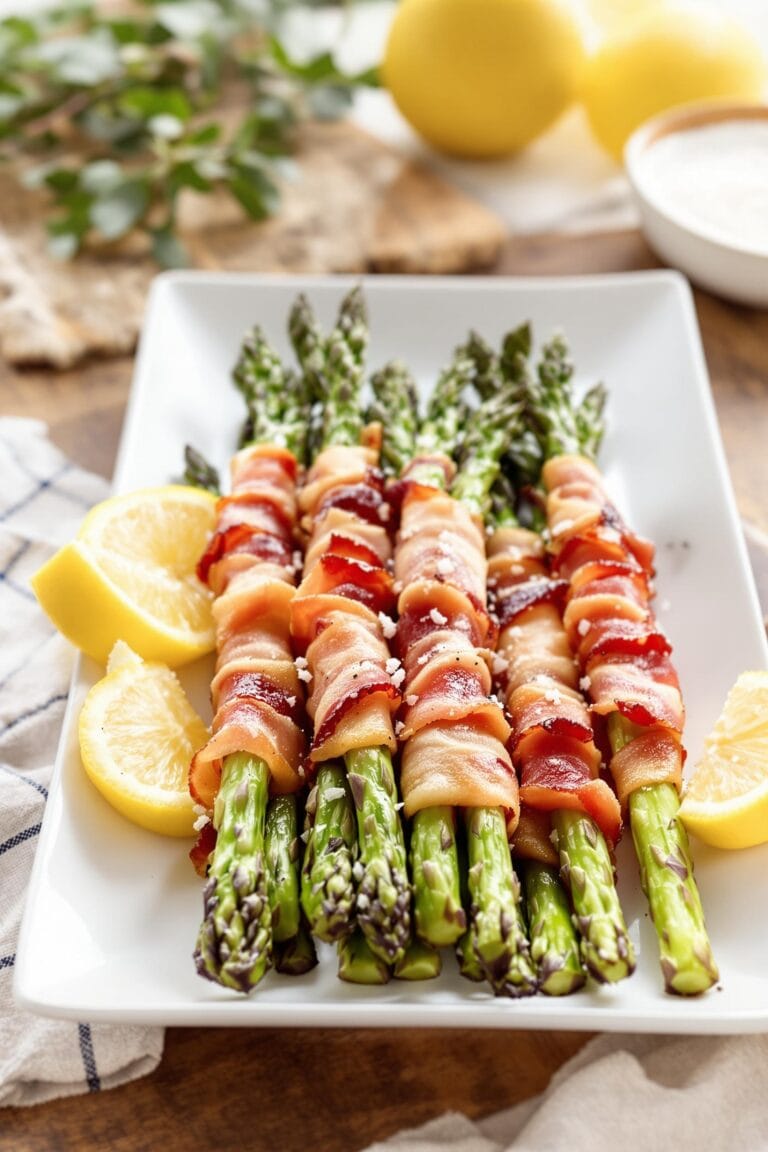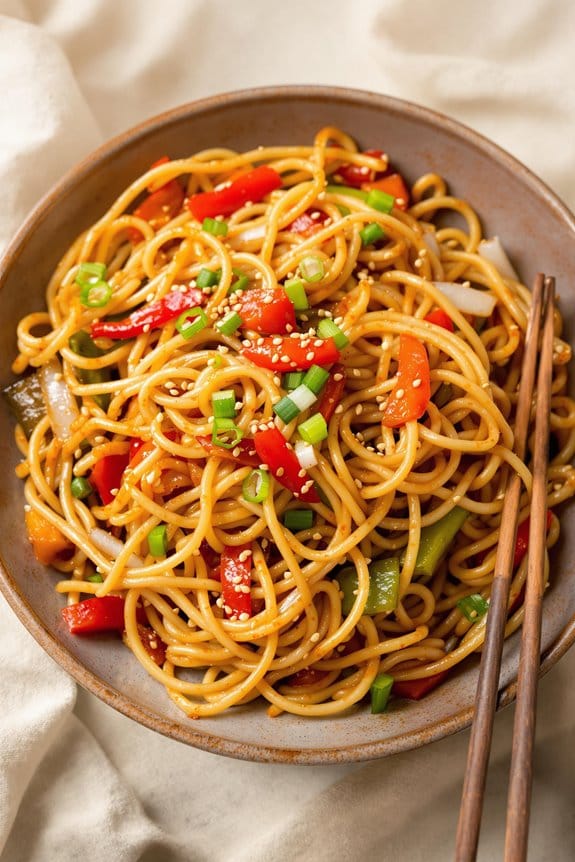Have you ever considered transforming your leftover cinnamon rolls into something exceptionally comforting? Imagine repurposing those slightly stale rolls by soaking them in a silky, spiced custard mix, then baking them until they’re just right. The result is a cinnamon roll bread pudding that’s both familiar and surprisingly novel. This dish strikes a lovely balance of creamy and rich textures with an intoxicating scent that wafts through your kitchen as it bakes. Topped with a drizzle of cream cheese icing, it becomes irresistible. But there’s more to its charm; let’s explore how its simplicity hides sophisticated layers of flavor awaiting your discovery.
History
While the beloved cinnamon roll has its roots in ancient spice trades, bread pudding emerged distinctly as a thrifty dish in medieval Europe.
You’ll find it fascinating how bread pudding started: thrifty cooks looking to use up stale bread soaked it in milk and eggs, then baked it until transformed. It’s a perfect example of making the most of what’s on hand.
Now, trace back to the origins of cinnamon rolls. It’s not just about the spice; it’s about the journey of culinary expertise across continents.
From the ancient spice caravans to the aromatic bakeries of northern Europe, cinnamon found its place in the swirls of dough that became an essential part of breakfasts and coffee breaks around the world.
Combining these two, cinnamon roll bread pudding isn’t just an innovative dessert; it’s a blend of tradition and creativity.
Each bite offers a taste of history, from the economical, resourceful European kitchens to the rich, spice-laden tales of the Silk Road.
As you explore this dessert, it’s a nod to the past, crafted from the simplicity of bread pudding and the luxuriousness of a cinnamon roll.
Recipe
Cinnamon roll bread pudding is a delightful twist on traditional bread pudding, incorporating the warm and comforting scents of cinnamon rolls into a rich, custard-based dessert. This dessert is perfect for special occasions or a decadent weekend brunch. The dish uses day-old cinnamon rolls, which helps in soaking up the custard mixture, guaranteeing that every bite is moist and flavorful.
The preparation for this dessert is straightforward. The cinnamon rolls are chopped into pieces and placed in a baking dish, where they’re soaked with a creamy, spiced custard. As it bakes, the top of the pudding becomes delightfully crisp, forming a golden-brown crust, while the inside remains soft and pudding-like. Serve warm, perhaps with a scoop of vanilla ice cream or a drizzle of cream cheese icing for an extra touch of indulgence.
Ingredients:
- 8 large day-old cinnamon rolls, cut into cubes
- 4 eggs
- 1 1/2 cups whole milk
- 1 cup heavy cream
- 1/4 cup granulated sugar
- 1 teaspoon vanilla extract
- 1/2 teaspoon ground cinnamon
- 1/4 teaspoon salt
- Optional: cream cheese icing or powdered sugar for topping
Cooking Instructions:
Preheat your oven to 350°F (175°C). In a large mixing bowl, whisk together eggs, milk, heavy cream, sugar, vanilla extract, cinnamon, and salt.
In a greased 9×13 inch baking dish, distribute the cubed cinnamon rolls evenly. Pour the custard mixture over the cinnamon rolls, making sure all pieces are coated. Gently press down with a spatula to guarantee the bread soaks up the custard. Allow it to sit for about 10 minutes to absorb fully before baking.
Place in the preheated oven and bake for 45-50 minutes, or until the top is golden brown and the center is set but slightly wobbly.
Extra Tips:
For the best results, use cinnamon rolls that are at least a day old, as they’ll absorb more of the custard without becoming too soggy.
For an even more luxurious treat, consider drizzling warm cream cheese icing over the top of the baked pudding—it adds a lovely richness and complements the cinnamon flavors perfectly.
If you prefer a crispier top, you can place the pudding under the broiler for 1-2 minutes after baking, but watch it carefully to prevent burning.
Leftovers can be stored in the refrigerator for up to three days and are delicious reheated or even eaten cold.
Step 1. Preheat Oven to 350°F
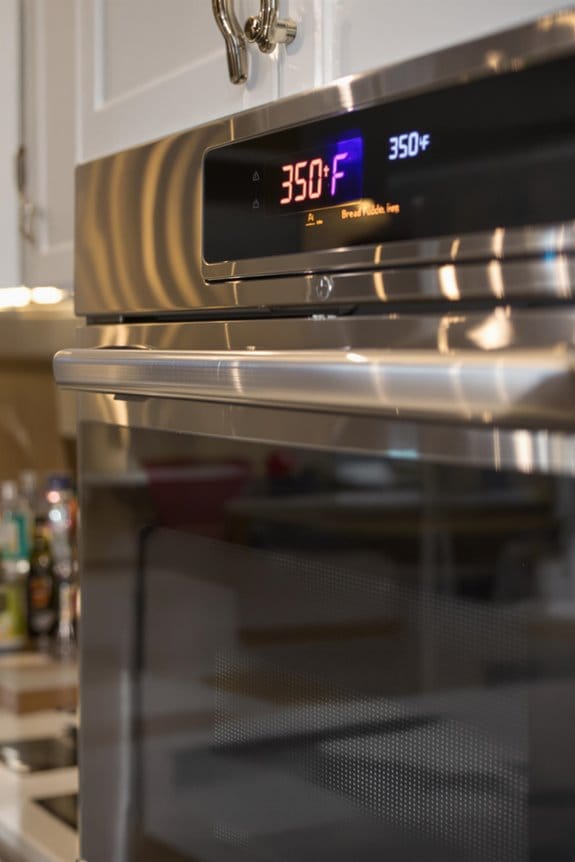
Before you begin mixing the ingredients, it’s essential to preheat your oven to 350°F. This initial step is vital for achieving the perfect texture and doneness in your cinnamon roll bread pudding. Confirming the oven is at the right temperature before you slide in your dish prevents uneven cooking — no one wants a pudding that’s scorched on the edges but still soggy in the middle!
Here’s why setting your oven to 350°F really matters:
- Consistency: At 350°F, the heat is moderate enough to cook the pudding thoroughly without burning the top or the edges. This temperature helps to achieve a golden-brown crust while assuring the inside is cooked to creamy perfection.
- Leavening Dynamics: Since your bread pudding will likely contain eggs and perhaps a raising agent like baking powder, a preheated oven guarantees these ingredients function properly. They react best under consistent, moderate heat, helping the pudding rise slightly and set properly.
- Time Efficiency: Having your oven preheated saves time. You won’t need to guess when to put your dish in or adjust cooking times unexpectedly, which means you can anticipate a more accurate baking duration and better results.
Step 2. Combine Ingredients Thoroughly
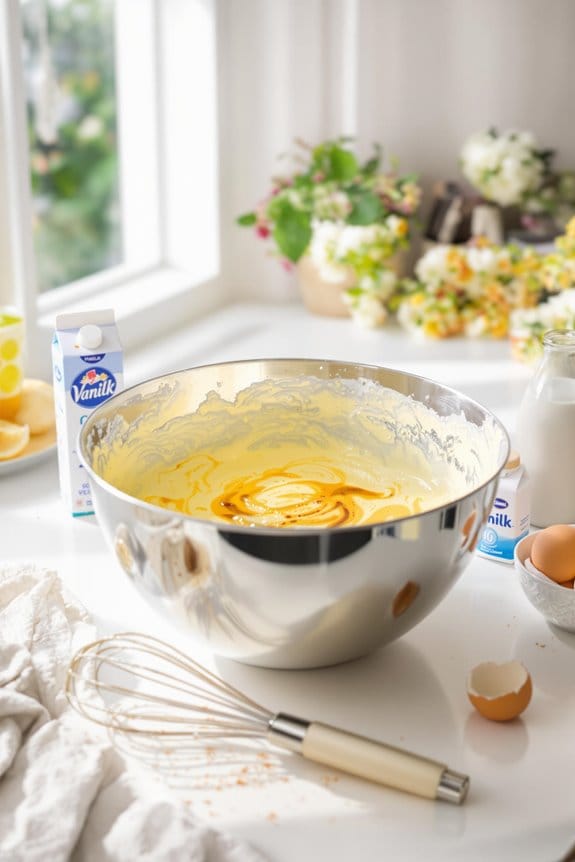
After confirming your oven is properly preheated to 350°F, it’s time to focus on preparing your cinnamon roll bread pudding mixture. First, you’ll need to grab a large mixing bowl. Start by placing the chopped cinnamon rolls as your base; these will provide the sweet, gooey texture that’s vital to the dish.
Next, in a separate bowl, whisk together your wet ingredients: eggs, whole milk, and vanilla extract. It’s essential you whisk them until they’re completely blended—a smooth consistency guarantees that each bite of the pudding is as luscious as the next.
Now, stir in sugar, cinnamon, and a pinch of salt to this mixture. The cinnamon amplifies the rolls’ warmth, while the sugar adds a delightful sweetness that ties all the components together.
Now, gently pour this liquid mixture over the chopped cinnamon rolls in your first bowl. Using a spatula, stir the mixture carefully until all the pieces are well-coated. It’s important not to rush this step; thorough mixing leads to every piece soaking up the flavorful custard, which is key for achieving that perfect pudding texture in the end.
Once everything looks evenly combined, you’re ready for the next step.
Step 3. Soak Bread in Custard Mixture
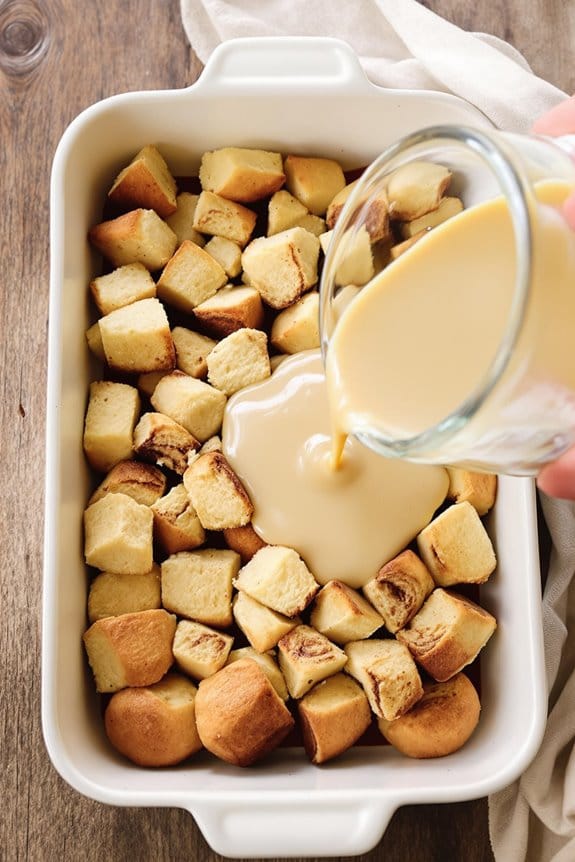
Let the cinnamon roll pieces sit in the custard mixture for about 20 minutes, making sure each chunk absorbs the flavorful liquid. This step is essential because it allows the bread to become saturated with the rich, sweet custard, which forms the base of your bread pudding.
As you wait, occasionally press down gently with the back of a spoon to help submerge the rolls completely and promote even soaking.
When soaking your cinnamon roll pieces, consider these three key elements:
- Temperature of Custard: Make certain the custard mixture is cool before adding the cinnamon roll chunks to prevent any precooking of the eggs. This keeps your dessert creamy and smooth.
- Type of Cinnamon Roll: Use slightly stale cinnamon rolls if available. Fresh rolls might become too mushy during soaking, while day-old pieces hold their shape better and soak up the custard more effectively without disintegrating.
- Soaking Time: Depending on the thickness and dryness of your rolls, the soaking time may vary. It’s better to err on the side of longer soaking to assure every piece is well-saturated, enhancing the overall texture of your dessert.
Always remember, a well-soaked base promises a deliciously moist finished product.
Step 4. Layer in Baking Dish
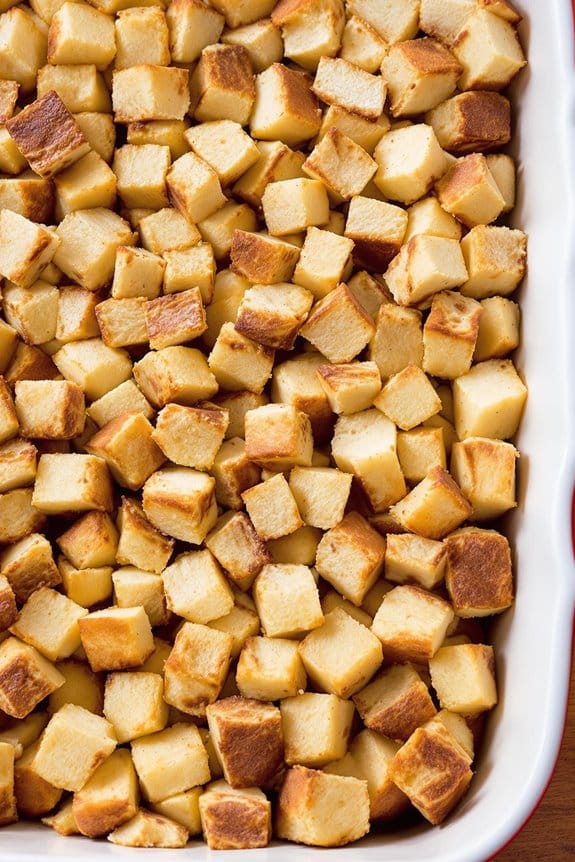
Once your cinnamon rolls have thoroughly soaked, it’s time to arrange them in a baking dish. Choose a large, greased baking dish that’ll snugly fit all the rolls in a single layer. Ideally, they should touch slightly, helping them to bind together as they bake, creating a beautiful, cohesive pudding.
Begin by placing the soggiest pieces at the bottom of the dish, which will guarantee an even distribution of moisture throughout the pudding. It’s important to meticulously arrange them so that there are minimal gaps, ensuring every bite contains that luscious cinnamon taste.
As you layer, gently press down on the rolls, encouraging them to soak up any remaining custard that you can drizzle over them. This step isn’t just about layering; it’s majorly about getting the setting right for a perfectly balanced dessert.
Step 5. Bake Until Golden Brown
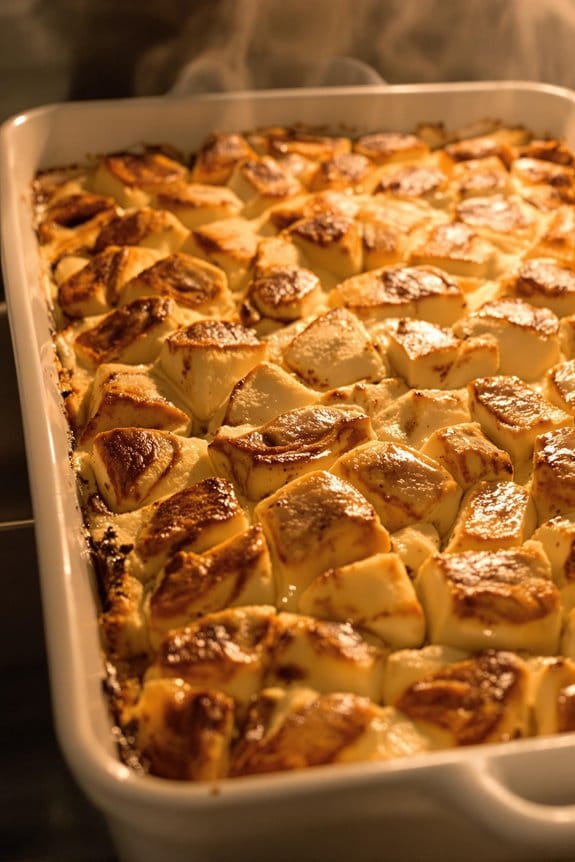
Preheat your oven to 350 degrees Fahrenheit and place the prepared baking dish on the center rack.
Now, it’s time to let the magic happen inside your oven as the ingredients transform into a golden, delectable dessert. As you bake your cinnamon roll bread pudding, there are key steps to guarantee it reaches that perfect golden brown finish:
- Consistent Temperature: Keep the oven door closed to maintain a steady temperature, avoiding any temptation to open it repeatedly. This consistency is essential for even baking and achieving that sought-after golden crust on top.
- Baking Time: Typically, your bread pudding will need about 45 to 50 minutes. You’re looking for the custard to set and the top to turn a rich golden brown. If it’s browning too fast, tent it with aluminum foil to prevent burning.
- Check Doneness: Insert a knife or a toothpick in the center of the pudding. If it comes out clean, your dessert is ready. A clean pick indicates that the custard has set perfectly.
Let it rest for a few minutes before serving. This patience allows the flavors to meld beautifully, making your cinnamon roll bread pudding a warm, inviting treat that’s hard to resist.
New Recipe
- Pepperoni and Hot Honey PizzaTry the tantalizing twist of pepperoni pizza with hot honey, where sweet meets heat—how will it transform your taste buds?
Cooking Tips
To guarantee your cinnamon roll bread pudding turns out moist and flavorful, it’s vital to get the bread consistency just right. If it’s too dry or hard, the pudding will end up tough and unappealing.
You’ll want to use day-old cinnamon rolls that are slightly stale as they absorb the custard mixture much better than fresh rolls. Tear or cut them into smaller pieces to make certain that each bite gets an equal share of cinnamon goodness and custard.
When mixing your custard, be thorough. It’s essential to whisk your eggs, milk, and vanilla extract vigorously. This guarantees that the spices dissolve properly and distribute evenly throughout the pudding, preventing any unevenness in the flavor.
Don’t rush this step; a smooth, well-mixed custard is key to a creamy texture.
As you layer the ingredients, gently press down the bread pieces into the custard mixture. This approach helps them soak up more liquid, which is the secret to a pudding that’s moist but not soggy.
Be careful not to compact them too tightly, though, as this could lead to a dense pudding.
Follow these tips, and you’ll create a dessert that’s sure to be a hit at any occasion, marrying the irresistible charm of cinnamon rolls with the comforting richness of bread pudding.
Final Thoughts
If you’ve followed the tips outlined previously, your cinnamon roll bread pudding is poised to delight.
You’ve mastered a dish that combines the heart-warming comfort of cinnamon rolls with the rich, indulgent texture of bread pudding. Whether you’ve whipped this up for a cozy family dinner or an impressive dessert for guests, you’re all set to revel in the compliments that are sure to come your way.
Here are three key takeaways to guarantee your success remains consistent:
- Always Use Fresh Ingredients: This includes the cinnamon rolls and any add-ins. Freshness translates directly into more flavor and better texture, enhancing the overall quality of your dish.
- Don’t Rush the Soaking Process: Allowing enough time for the cinnamon rolls to properly soak in the custard is vital. This patience guarantees every bite is perfectly moist and flavorful.
- Customize with Creativity: Have fun experimenting with different flavors and toppings. Whether it’s a dash of nutmeg, a sprinkle of pecans, or a drizzle of caramel sauce, personalizing your pudding can turn a great dish into an unforgettable one.






